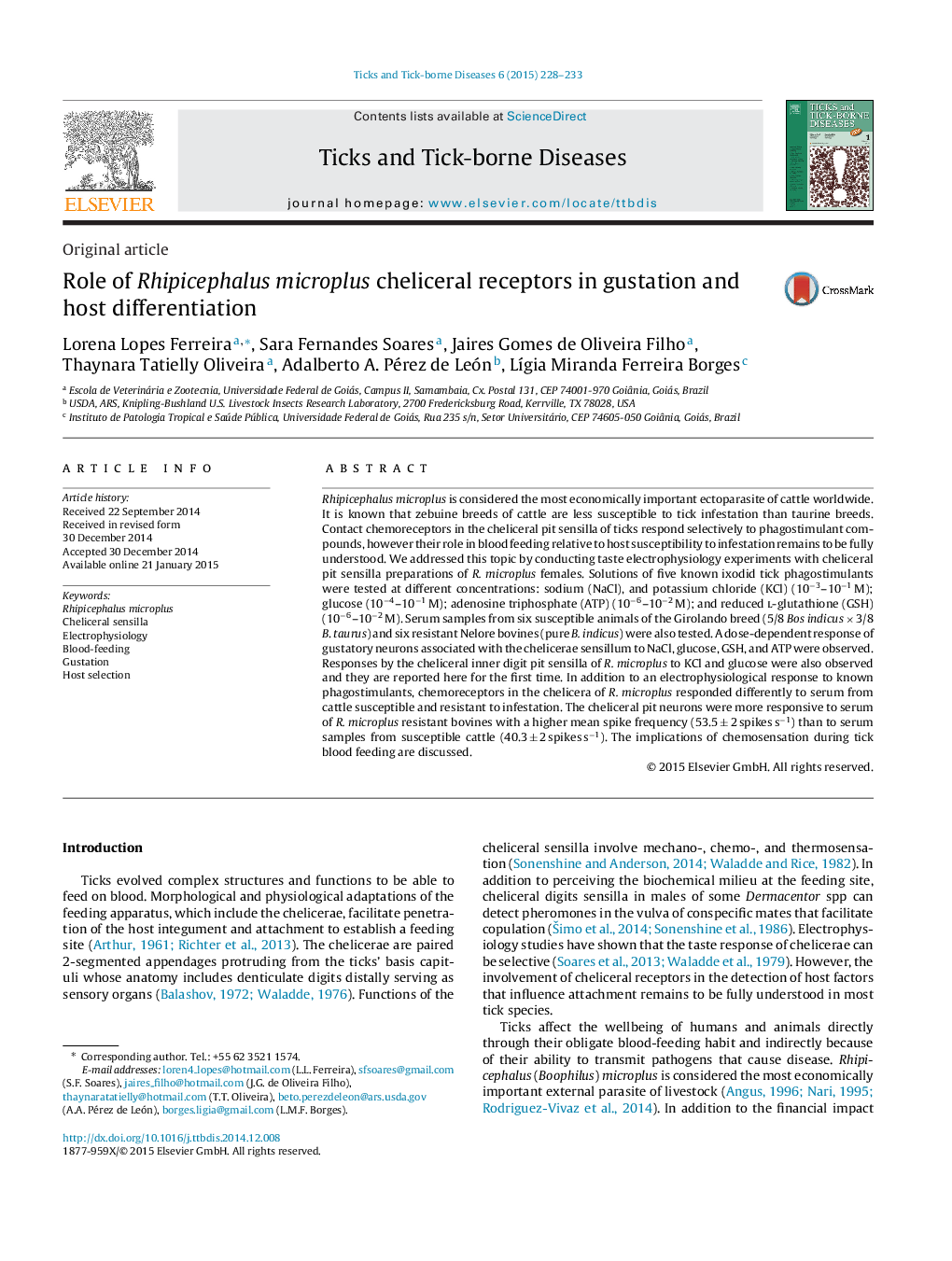| Article ID | Journal | Published Year | Pages | File Type |
|---|---|---|---|---|
| 2473915 | Ticks and Tick-borne Diseases | 2015 | 6 Pages |
Rhipicephalus microplus is considered the most economically important ectoparasite of cattle worldwide. It is known that zebuine breeds of cattle are less susceptible to tick infestation than taurine breeds. Contact chemoreceptors in the cheliceral pit sensilla of ticks respond selectively to phagostimulant compounds, however their role in blood feeding relative to host susceptibility to infestation remains to be fully understood. We addressed this topic by conducting taste electrophysiology experiments with cheliceral pit sensilla preparations of R. microplus females. Solutions of five known ixodid tick phagostimulants were tested at different concentrations: sodium (NaCl), and potassium chloride (KCl) (10−3–10−1 M); glucose (10−4–10−1 M); adenosine triphosphate (ATP) (10−6–10−2 M); and reduced l-glutathione (GSH) (10−6–10−2 M). Serum samples from six susceptible animals of the Girolando breed (5/8 Bos indicus × 3/8 B. taurus) and six resistant Nelore bovines (pure B. indicus) were also tested. A dose-dependent response of gustatory neurons associated with the chelicerae sensillum to NaCl, glucose, GSH, and ATP were observed. Responses by the cheliceral inner digit pit sensilla of R. microplus to KCl and glucose were also observed and they are reported here for the first time. In addition to an electrophysiological response to known phagostimulants, chemoreceptors in the chelicera of R. microplus responded differently to serum from cattle susceptible and resistant to infestation. The cheliceral pit neurons were more responsive to serum of R. microplus resistant bovines with a higher mean spike frequency (53.5 ± 2 spikes s−1) than to serum samples from susceptible cattle (40.3 ± 2 spikes s−1). The implications of chemosensation during tick blood feeding are discussed.
